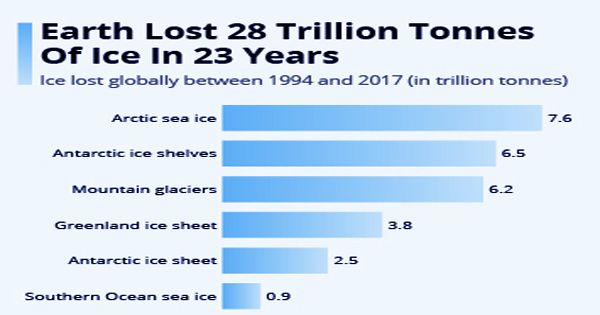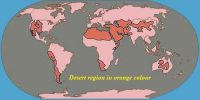A total of 26 trillion tons of ice has disappeared from the Earth’s surface since 1994. The astonishing decision was made by UK scientists who analyzed satellite surveys of planetary poles, mountains, and glaciers to determine how much ice coverage has been lost due to global warming. Triggered increased greenhouse gas emissions.
Scientists at the University of Leeds and Edinburgh and University College London have analyzed satellite surveys of glaciers, mountains, and ice sheets between 1994 and 2017 to identify the effects of global warming.

Global warming has melted 28trillion tons of ice in just 23 years
Describing the ice erosion as shocking, the group discovered that sea levels could rise dramatically as glaciers and ice sheets melt, possibly reaching one meter (3 feet) by the end of the century.
In this context, every centimeter of sea level means that about ten million people will be displaced from their lowlands, Professor Andy Shepherd, director of the Center for Polar Observation and Modeling at the University of Leeds, told the Guardian.
The results show that the rate of ice loss has increased by 56 percent since the 1990s, from 0.6 to 1.2 trillion tons per year. During the 23-year study, .5.5 trillion tons of ice disappeared from Antarctic ice sheets, .2.2 trillion tons from mountain
glaciers, and 3.7 trillion tons of Arctic sea ice from Greenland ice sheets. The Antarctic ice sheet also lost 2.5 trillion tons, as did South Africa’s 0.9 trillion tons of sea ice. It is thought that most of this ice loss occurred as a direct result of rising air temperatures, with the rest due to rising sea temperatures. In light of these discoveries, the researchers wrote that much of the Earth’s ice loss is a direct result of climate warming.
As the white ice disappears and the dark water and soil beneath it are exposed, the earth loses its ability to reflect solar radiation into space. Instead, this radiation is absorbed and contributes to further warming of the planet. Then of course there is the matter of sea-level rise. According to the authors of the study, during the 23-year study, ground ice erosion increased globally at about 35 millimeters (1.4 inches) above sea level.
The study looks only at data from 2001, with two more recent incidents -including damage to two Canadian ice caps and more dramatic damage in Greenland’s icy winters – suggesting that the situation continues and urgent action is needed.













